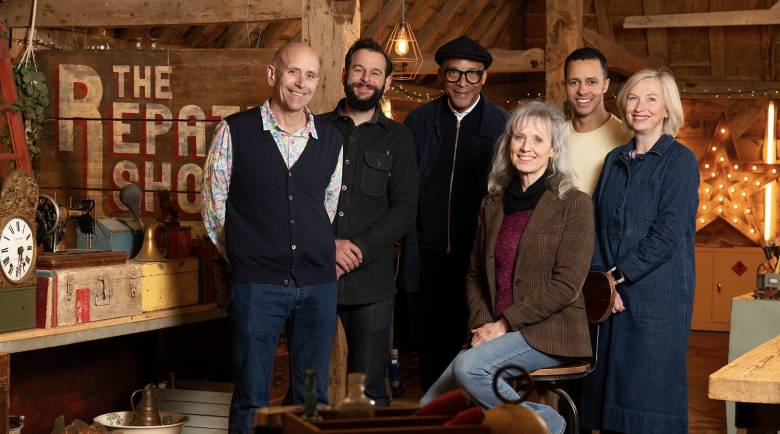“Public Eye” is a classic British television drama series that aired on ITV from 1965 to 1975, spanning seven seasons and 87 episodes. The show was created by writers Roger Marshall and Anthony Marriott, who sought to move away from the typical “square-jawed” heroes of Hollywood films. This desire for a more unconventional protagonist was shared by Alfred Burke, the actor chosen to play the series’ lead character, Frank Marker.
Background and Genesis
“Public Eye” was designed with a flexible structure and plotlines. While each episode typically featured a standalone case for Marker, an enquiry agent, the show also incorporated story arcs spanning multiple episodes and, in one instance, an entire series. Marker’s work ranged from routine investigations, such as gathering evidence for divorces or creditworthiness enquiries, to more exotic cases like tracing missing persons or even a prize-winning whippet. The title “Public Eye” is a twist on the more common “private eye,” reflecting the show’s unique take on the genre.
Frank Marker
Frank Marker, portrayed by Alfred Burke, is an enquiry agent with a unique set of skills and a past we know very little about. Described as cynical, dour, and world-weary, Marker frequently finds himself entangled in bigger criminal schemes as he tries to make a living on the outskirts of London. The character was designed as a British rival to Raymond Chandler’s American gumshoe, Philip Marlowe.
Marker is an unmarried loner in his early forties when the series begins. He is tough but doesn’t like violence, unattached, and self-sufficient, with a shabby office and a modest lifestyle. Marker’s fees are often low. Marker’s work often brings him into contact with the police and the criminal underworld, neither of whom he is particularly fond of.
Seasons and Locations
The series aired over ten years, with seasons produced by ABC Television and Thames Television. Here is a detailed breakdown of each season:
Season 1 (1965): The first season, produced by ABC Television, premiered on 23 January 1965 and was set in London. Only two episodes from this season, “Nobody Kills Santa Claus” and “The Morning Wasn’t So Hot,” are known to survive in their entirety. The season introduced viewers to Marker’s character and his modest lifestyle, with his office located near Clapham Junction. The season set the tone for the series, showcasing Marker’s investigations and his ability to navigate the seedy underbelly of the city.
Season 2 (1966): This season saw the show move to Birmingham, as Marker found London increasingly unaffordable. Only two episodes from this season, “Don’t Forget You’re Mine” and “You Can Keep the Medal,” have survived. The change in location brought a sense of novelty to the series, with Marker navigating the second city’s local colour and unique settings. The season also featured location shooting, incorporating Birmingham’s canals and streets, adding a sense of spontaneity and authenticity to the show.
Season 3 (1968): The final season produced by ABC Television before the franchise merged with Rediffusion to form Thames Television. Only one episode from this season, “The Bromsgrove Venus,” is known to exist. The season concluded with a cliffhanger, as Marker was framed and sent to prison, leaving viewers eager to find out what would happen next.
Season 4 (1969): Thames Television took over production, and this season underwent a unique format change. Commonly referred to as ‘the Brighton series,’ it consisted of seven linked episodes that focused on Marker’s release from prison and his gradual rehabilitation. The season introduced semi-regular supporting characters, including Marker’s landlady, Mrs Mortimer (Pauline Delaney), with whom he forms a platonic friendship, and his probation officer, Mr Hull (John Grieve). The Brighton setting allowed for social commentary on the attitudes of late-1960s England, as Mrs Mortimer takes in ex-prisoners as lodgers.
Season 5 (1971): This season doubled the episode count to thirteen and introduced DS Percy Firbank (Ray Smith), the series’ longest-running supporting character. The setting changed to Eton and the surrounding Windsor area. The Golden Flower Chinese restaurant, visible from Marker’s office, became a recurring backdrop for the series. The season featured a mix of routine and exotic cases, with Marker’s enquiries spanning from missing persons to stolen jewels.
Season 6 (1972-1973): The first season to be filmed entirely in colour, it was beset by broadcast delays due to boxing coverage and the Christmas holiday. It was the last season to be set in Eton. The season continued to explore the relationship between Marker and Firbank, with the latter becoming increasingly interested in Marker’s work. Notable episodes include “Egg and Cress Sandwiches,” where Marker is hired to investigate “poison pen” letters accusing a vicar of impropriety, and “The Trouble with Jenny,” where Marker saves a woman (Petra Markham) from suicide and uncovers her hidden motivations.
Season 7 (1975): The final season featured three loose story arcs as Marker moved locations, first to Walton and then to Chertsey in Surrey. It introduced the character Ron Gash (Peter Childs), a former policeman and friend of Firbank, who offers Marker a job with his private investigation agency – Marker, an intrinsic loner doesn’t stay with Gash for long. The season explored Marker’s resilience and his ability to persevere in the face of adversity. The end credits of the series featured Burke, in character as Marker, walking up a flight of stairs on a railway bridge in Chertsey, crossing it, and then descending on the other side.
Locations
The series predominantly used London as its backdrop, reflecting Marker’s investigations on the outskirts of the city. However, other locations were featured over the course of the show’s run:
Brighton: Marker relocates to Brighton in Season 4 as part of his rehabilitation and reintegration into society. The season highlights his disorientation in a world that has changed during his incarceration. The Brighton episodes were notable for their social commentary and the introduction of recurring characters.
Birmingham: Seasons 2 and 3 are set in Birmingham, bringing a sense of novelty and local flavour to the series. Marker navigates the city’s diverse landscapes, from canals to residential areas. The use of location shooting in Birmingham added a sense of authenticity to the show.
Chertsey: Marker moves to Chertsey in the final season, providing a fresh backdrop for his investigations and a change of pace from the previous settings. The railway bridge in Chertsey, featured in the end credits, has sparked curiosity among fans.
Eton: Seasons 5, 6, and the beginning of Season 7 are set in Eton and the surrounding Windsor area, offering a new setting for Marker’s enquiries and introducing the iconic Golden Flower Chinese restaurant as a recurring location.
Legacy
“Public Eye” left a lasting impact on British television, offering a grittier and more down-to-earth portrayal of a private investigator compared to the glamorous American gumshoes of the time. The show’s enduring popularity is evident in its re-runs on channels like Talking Pictures TV and the release of DVD box sets. The series also cemented Alfred Burke’s status as a talented and versatile actor. Burke’s portrayal of Marker showcased his ability to embody complex, nuanced characters, and he went on to have a long and illustrious career, appearing in productions like “Harry Potter and the Chamber of Secrets” and “The Borgias.” Burke passed away in 2011, leaving behind a rich legacy in British television and theatre.
TV’s Greatest Hits: A series of articles about the shows we consider the greatest of all time, from the 1950’s to the present day. These are the classics that have stood the test of time and have a massive rewatchability factor.













